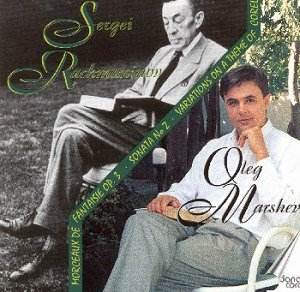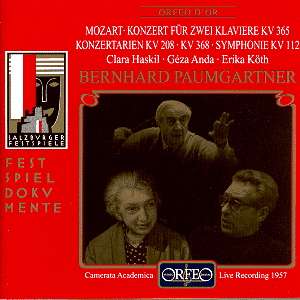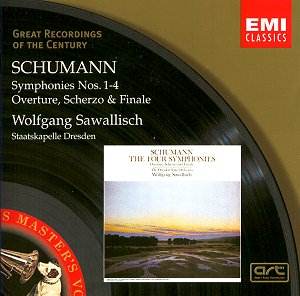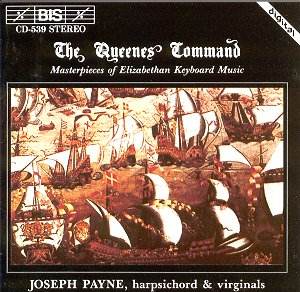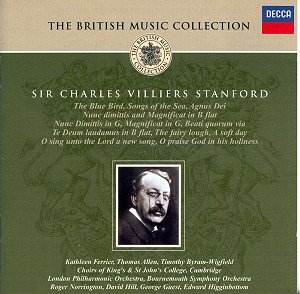 Composer: Charles Villiers Stanford
Composer: Charles Villiers Stanford
Works: The Bluebird, Op.119 No.3 (1910), Beata quorum via, Op.38 No.3 (1890), Songs of the Sea, Op.91 (1904), Te Deum laudamus, Magnificat, Nunc dimittis Service in B flat, Op.10 (1902), Magnificat (1904), Nunc dimittis Service in G, Op.81 (1904), O sing unto the Lord a new song (Psalm 96), O praise God in His holiness (Psalm 150), Agnus dei, The Fairy Lough, Op. 77 No. 2 (1900), A Soft Day, Op. 140 No. 3 (1913)
Performers: Kathleen Ferrier (contralto), Thomas Allen (baritone), Timothy Byram-Wigfield (tenor), Timothy Barber (treble), Choirs of King’s and St John’s Colleges, Cambridge, Frederick Stone (piano), London Philharmonic Orchestra, Bournemouth Symphony Orchestra, conducted by George Guest, Edward Higginbottom, David Hill, Roger Norrington
Recording: BBC Studios, London 1952; Winchester Cathedral 1990; The Colosseum, Watford 1996; New College Chapel, Oxford 2000
Label: Decca
Charles Villiers Stanford, a pivotal figure in the English choral tradition and a prominent composer of the late Romantic era, is often overshadowed by his contemporaries. This collection from Decca, part of their British Music Collection, assembles a variety of his vocal works, capturing the essence of Stanford’s contribution to church music and song. The selections range from the ethereal “The Bluebird” to the robust “Songs of the Sea,” showcasing the composer’s stylistic diversity while reflecting his Irish heritage and commitment to English musical identity.
The performances are anchored by the rich timbre of Kathleen Ferrier and the robust baritone of Thomas Allen, whose interpretations breathe life into Stanford’s often underappreciated oeuvre. Ferrier’s rendition of “A Soft Day” is particularly noteworthy; her voice floats effortlessly, capturing the pastoral simplicity and emotional depth of Winifred Letts’ text with a sensitivity that resonates deeply. In contrast, Allen’s interpretation of “Devon, O Devon in Wind and Rain” conveys an invigorating energy, embodying the maritime spirit that Stanford sought to evoke in his “Songs of the Sea.” The choir’s contributions, particularly in the choral settings of the Magnificat and Nunc dimittis, demonstrate a refined blend of voices, exhibiting clarity and balance that highlight Stanford’s intricate counterpoint and harmonic richness.
From a technical standpoint, the recording quality of this mid-priced disc is commendable, especially given its varied sources spanning several decades. The engineering, which preserves the warmth of the voices while maintaining clarity in the orchestral textures, enhances the listener’s experience. The ambient acoustics of the recording venues, particularly the resonant space of Winchester Cathedral, enrich the sound, allowing the choral textures to bloom while also capturing the intimate nuances in solo performances. There are minor clicks present, likely artifacts from the original sources, but these do not detract significantly from the overall listening experience.
Stanford’s works are often characterized by their diatonic language, marked sophistication, and melodic charm, and this collection encapsulates these attributes well. The “Te Deum laudamus” and the “Magnificat” are exemplary of his ecclesiastical output, with the former showcasing a grand, celebratory quality that is both uplifting and reflective. The orchestration, particularly in the later works, provides an effective backdrop to the choral writing, although one may lament the absence of his orchestral versions in this compilation, as they would offer a fuller representation of his stylistic capabilities.
The absence of Stanford’s operatic works is notable, as the collection leans heavily towards his sacred and song repertoire. While this approach highlights his significant contributions to church music, it somewhat limits the perspective on his versatility as a composer. Comparatively, other recordings of Stanford’s works may include a broader selection, offering a more rounded view of his artistic legacy.
This Decca release serves as an accessible introduction to Stanford’s vocal music, particularly for those unfamiliar with his style. The selection highlights not only the appealing craftsmanship of the music but also the enduring legacy of its performers. Stanford’s music, though often relegated to the shadows of the British choral tradition, emerges here with a fresh vibrancy, inviting re-evaluation of his place in the pantheon of English composers. The combination of stellar performances, thoughtful programming, and quality engineering results in a compelling homage to a composer whose music continues to resonate with audiences today.
